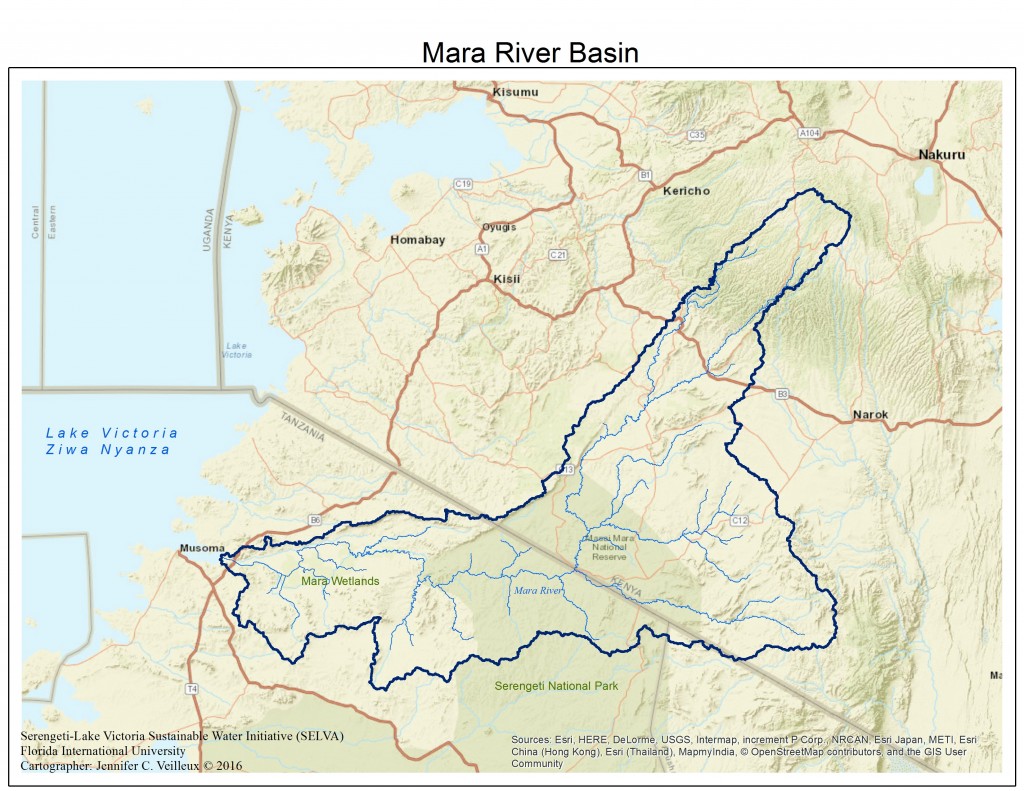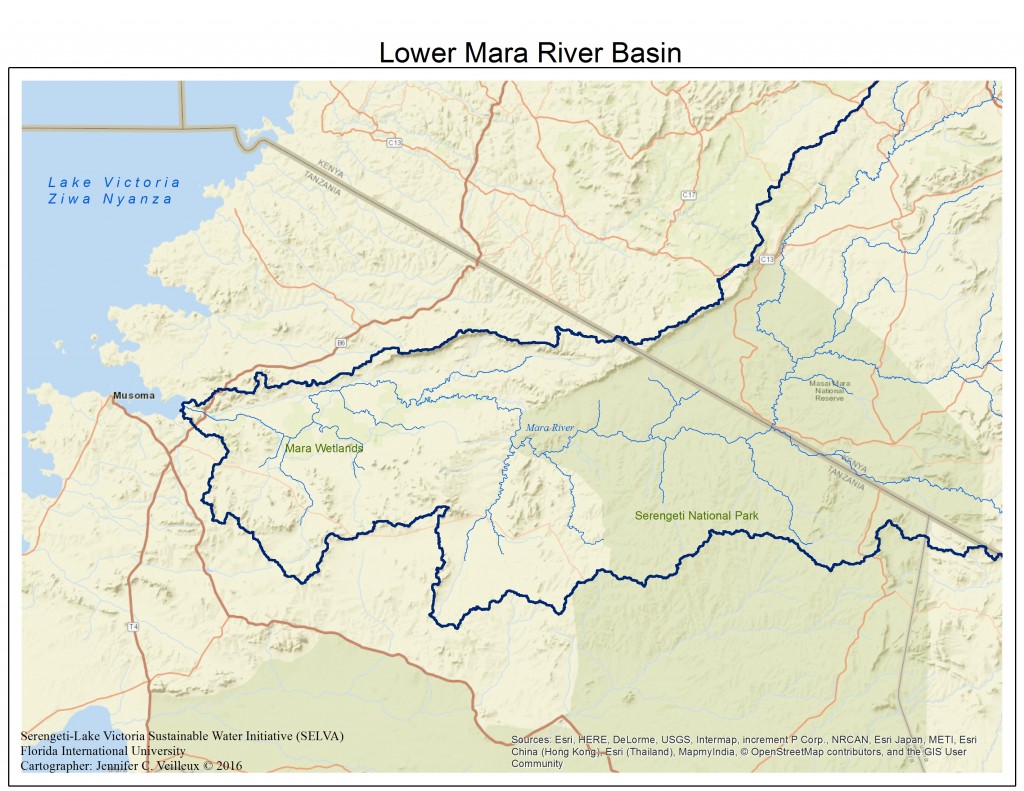The Mara River Basin stretches across territory in Kenya and Tanzania making it a transboundary basin. There are more than 300 transboundary basins throughout the world. Many of these are shared by just two countries like the Mara. However, even two countries sharing a water resource can cause conflict if there is no institutional framework to govern the management. The fact that the Mara is a transboundary basin is cause for complexity when it comes to management. The countries of Kenya and Tanzania have no official treaties governing their shared waters, of which the Mara is one. Kenya’s economy and environmental policies are different to Tanzania’s national policies on these same topics. The Mara flows through agricultural land and protected zones in both countries, but again, these are managed separately and differently according to country standards. Even independent scientific studies have stopped at the country borders.
The Mara is actually a subbasin within the Lake Victoria Basin or watershed, which is in turn a subbasin within the greater Nile River Basin. Confusing? It is a question of scale. While the Mara seems to be a small basin in comparison to the basins within which it is found, it still presents a large area of 13504 km² and flows for almost 400 km from its source in Kenya’s Mau Forest to Lake Victoria. This vast area drains developed and protected land, presenting a multifaceted challenges for water managers. Even our team spending two weeks moving throughout the lower portion of the basin only touched upon the surface of meeting water users, hearing about challenges, and digging out the opportunities for sustainable water use and cooperation.
The types of zones within the Mara River Basin are quite different from one another and as such require flexible and adaptive management strategies. The SELVA team divided the Lower Mara Basin into the Lake Victoria zone, the Mara Wetlands (upper and lower may be considered separate as it appeared that there were separate issues in the northern and southern portion), agricultural zone (between Serengeti Park and the Mara Wetlands), and the Serengeti National Park. Not all of these zones are inhabited by people, but where people are not living there are communities of African wildlife thriving.
It is not known in total how many people are living in the Mara River Basin, but numbers hover around 1.3 million. Of these people, a high percentage in the Tanzanian portion are absolutely dependent on the water as a resource. There are no reliable alternatives to the river. The ground water in many places is contaminated with salt and in other places is not present year round. Any changes to the Mara River will impact a large number of people’s livelihoods and possibly their ability to continue living in the region.









Recent Comments